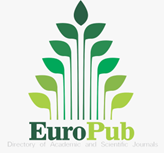Development strategy for natural tourism attractions: A SWOT analysis for sustainable growth
DOI:
https://doi.org/10.61511/seesdgj.v2i2.2025.1315Keywords:
te'ekuea baths, development strategy, nature tourism, WakatobiAbstract
Background: This research aims to find out Development Strategy Te'ekuea Baths as a Natural Tourism Attraction in Maleko Village, Wangi-Wangi District, Wakatobi Regency. Methods: This research was conducted in October-November 2023 using interview observation, documentation and literature study methods. The population in this research is the entire community in Maleko Village. The population in this research is the community, related agencies and visitors who carry out activities at the Te'ekuea Bathing Tour. The sample chosen in this study was 10% of 177 heads of families (KK), so 10% of the number of family heads is 17.7 or rounded up to 18 families. Meanwhile, for sample determination, the method can be used accsidental sampling. Respondents who have been determined using the method purposive sampling. In this research purposive sampling addressed to the Tourism Department, Bappeda (planning agency development regional), village heads, sub-district heads and community leaders. The data analysis carried out in this research is qualitative and quantitative descriptive analysis to describe the SWOT analysis so as to obtain a tourism development strategy. Findings: The Te'ekuea Baths development strategy shows the highest opportunity in income increase (0.62) and the lowest threat in visitor disruptions (0.17). The SWOT matrix suggests four main strategies: S-O (maximize strengths for visitor attraction), W-O (improve promotion and facilities), S-T (manage eco-friendly waste and public awareness), and W-T (enhance cleanliness and facilities). The IFE matrix average score is 2.9, and EFE matrix is 2.78, indicating growth potential. Conclusions: The research emphasizes the vital role of modern digital promotion techniques, especially social media, in enhancing the visibility of Te'ekuea Baths as a tourism destination, ultimately driving greater engagement and visitor growth. Novelty/Originality of this article: This study highlights the role of modern digital promotion methods, such as websites and social media, in advancing local tourism, focusing on their effectiveness in engaging younger generations and broadening the reach of the Te'ekuea Baths tourism destination.
References
Aditiawati, P., Astuti, D. I., Suantika, G., & Simatupang, T. M. (2016). Development of local potential in Panawangan Village as a model for vocational villages in empowering communities and increasing national food security. Journal of Sociotechnology, 15(1), 59–67. https://doi.org/10.5614/sostek.itbj.2016.15.1.6
Arikunto, S. (2006). Research procedures for a practical approach. PT Rineka Cipta.
Freddy, R. (2006). SWOT analysis technique for dissecting business cases. Gramedia Pustaka Utama.
Haerawan, H., & Magang, Y. H. (2019). SWOT analysis in determining marketing strategies for household appliances at PT Impressindo Karya Steel Jakarta-Central. Scientific Journal of Management and Business, 5(2), 335–230. http://dx.doi.org/10.22441/jimb.v5i2.6833
Indrianeu, T., & Singkawijaya, E. B. (2021). Analysis of tourism potential in Cianjur Regency. Journal of Geography and Its Teaching, 19(1), 73–90. https://doi.org/10.26740/jggp.v19n1.p73-90
Iriani, A. Y. (2019). Tourism development strategy based on indigenous community preferences: Case study in Raja Ampat. Journal of Society and Culture. https://doi.org/10.14203/JMB.V21I3.731
Karsudi, R., Soekmadi, & Kartodirhajo, H. (2010). Ecotourism development strategy in the Yapen Islands district, Papua Province. Conservation Media Journal, 15(12), 80–87. https://doi.org/10.7226/jtfm.16.3.%25p
Kementerian Pariwisata Republik Indonesia. (2015). Strategi pariwisata nasional. Kementerian Pariwisata Republik Indonesia
Paramita, M., Muhlisin, S., & Palawa, I. (2018). Improving the community's economy through the use of local resources. Qardhul Hasan: Media for Community Service, 4(1), 19–30. https://doi.org/10.30997/qh.v4i1.1186
Paramita, P. & Pendit, N. S. (1999). Tourism science—An initial introduction. Jakarta
Prastika, Y., & Sunarta, I. N. (2018). Study of tourism development and its influence on the physical environment at Balangan Beach, Ungasan Village, Jimbaran. Journal of Tourism Destinations, 6(1), 110–116. https://doi.org/10.24843/JDEPAR.2018.v06.i01.p16
Putra, I. G. N. A. B. (2017). SWOT analysis as a strategy to increase excellence at UD. Peanut Sari in Tamblang Village. Undiksha Journal of Economic Education, 9(2), 397–406. https://ejournal.undiksha.ac.id/index.php/jjpe/article/view/20106
Rahmatica, A. N. M. (2021). Tourism development strategies to improve the community's economy in the new normal (Case Study at Bale Tani Agrotourism). Youth & Islamic Economic, 2(01s), 19–34. https://jurnalhamfara.ac.id/index.php/yie/article/view/130
Riani, N. K. (2021). Tourism is a 2-edged knife. Journal of Research Innovation, 2(5), 1469–1474. https://doi.org/10.47492/jip.v2i5.923
Rusyidi, B., & Fedryansah, M. (2018). Community-based tourism development. Focus: Journal of Social Work, 1(3), 155–165. https://jurnal.unpad.ac.id/focus/article/view/20490
Saputra, M. R., & Rodhiyah, R. (2016). Tourism development strategy in the Mount Andong area of Magelang. Journal of Business Administration, 5(4), 571–586. https://doi.org/10.14710/jiab.2016.13652
Satrio, A. W. (2018). Local economy-based ecotourism development strategy in the context of a poverty alleviation program in the Malang Regency area. Journal of Indonesian Applied Economics, 3(1), 37–47. http://dx.doi.org/10.21776/ub.jiae.2009.003.01.5
Setiono, D. N., Fazri, M., & Koesparmadi, K. (2020). Cigaru Lake tourist area: Development potential, influence on socio-economic conditions of local communities, and investment feasibility (Case Study: Cigaru Lake Tourism, Cisoka Village, Tangerang Regency). Science and Technology Journal, 4(1), 10–20. https://jurnaliptek.iti.ac.id/index.php/jii/article/view/151
Sugiyono. (2018). Quantitative, qualitative, and R&D research methods. PT Alfabet.
Suparmoko, M. (2008). Natural resources and environmental economics: A theoretical approach. BPFE Yogyakarta.
Swain, S. K., & Mishra, J. M. (2017). Tourism: Principles and Practices. Oxford University.
Syamsu, M. N. (2018). Feasibility study of Gembor waterfall as a tourist destination to improve the economy of the people of Jatimulyo Village, Girimulyo District, Kulonprogo Regency, Yogyakarta. Journal of Tourism, 12(3), 71–84. http://dx.doi.org/10.47256/kji.v12i3.83
Widiasmadi, N. (2023). Increasing the carrying capacity of lithosol soil through distribution microbes with technology Smart Bioosildam. Journal on Education, 5(3), 9498–9509. https://doi.org/10.31004/joe.v5i3.1821
Qur'an, A. A. (2017). Natural resources in sustainable development from an Islamic perspective. El-Jizya: Journal of Islamic Economics, 5(1), 1–24. https://doi.org/10.24090/ej.v5i1.1621
Yoeti, O. A. (1996). Introduction to tourism science. PT. Space.
Downloads
Published
How to Cite
Issue
Section
Citation Check
License
Copyright (c) 2025 Aci Astika, Lies Indriyani, La Ode Siwi, Sahindomi Bana, Wa Ode Hastiani Fahidu, Eka Rahmatiah Tuwu, La Gandri

This work is licensed under a Creative Commons Attribution 4.0 International License.
















